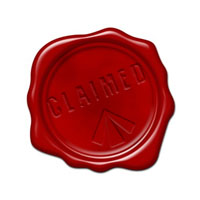Researchers who have claimed this convict
There are currently 2 researchers who have claimed Robert Bootle
- Researcher (Robert Ahern)
- Researcher (Paul Buchanan)
|
 |
Biographies
Convict Stain
Robert Bootle was born in Bolton, Lancashire, North West
England in 1827. He worked as a stable hand and laborer but by the age of 13 on 12
January 1835 he was convicted of stealing shoes and sentenced to a term of 7 years
imprisonment. He was held in the hulk Fortitude (formerly the HMS Cumberland launched
in 1807, converted to a prison hulk in 1830 and renamed Fortitude in 1833) moored at
Chatham then on 6 July 1835 departed from Sheerness in the transport vessel Mary Ann for
‘Botany Bay’ with 306 other convicts.
The Mary Ann arrived in Sydney on 26 Oct 1835 but the prisoners were not landed until
11th November 1835.
Robert was Convict Number 35-2801, he was 5' 5" (1.65m) high with a fresh complexion,
light hair and hazel eyes. He had a hairy mole on the left side of his chin and a scar on the
top of the fourth finger of his left hand. Could not read or write.
In 1838 he was part of a convict gang working at the Pennant Hills Quarry (now Dundas
Park). Convict labour was used for quarrying and breaking the stone which was carted to
Ermington Wharf, dumped into punts and conveyed to Sydney.
Robert Bootle received his Certificate of Freedom on 7 Nov 1842 and travelled north from
Sydney working as a bullock driver. He probably worked for James Priestley, a carrier in the
Clarence and Richmond rivers area. In any case he seems to have taken up with Isabella
Massey, Priestley’s 20 year old step daughter before 1845 and moved to Macintire Brook by
1848 when their first child (Mary Bootle) was born. By 1850 they had three children and
had moved to Canal Creek (on the Millmerran Leyburn Road before Tummaville).
Robert was apparently doing well because he owned his own bullock team consisting of a
dray, tackle, and ten bullocks which he sold to a Warwick storekeeper, John Bowen, in
October 1855. However it seems that the sale did not go ahead as two of the bullocks went
missing (see http://nla.gov.au/nla.news-article3708216).
By 1857 Robert and his family were living in Aubigny south of Oakey (and now the site of the
Beef City Feedlot) where Agnes was born in May of that year. Robert was working as a
carrier for Mr. Joseph King, who owned a property about 40 klm from Taroom, on the upper
Dawson River. Robert’s bullock team carried produce from that property to the river at
Ipswich. Each journey took some months and were quiet hazardous. That same year four
stockmen were reported to have been murdered by aborigines on the station (see
http://nla.gov.au/nla.news-article78850667). See also the Massacre at Hornet Bank in 1857
http://nla.gov.au/nla.news-article77427860.
On the 29 June 1857 Robert was camped on the bank of the Bremer River (now Jim
Finimore Park) opposite the Sportsman's Arms' Inn (the Sportsman's Arms Inn was located
in Brisbane Street Ipswich). That night he was making his way back to his camp from the Inn
by crossing the river on a fallen tree. It appears that he slipped and fell into the river. The
following morning his body was found in the river (see http://nla.gov.au/nla.newsarticle78850448).
He was aged just 35 at the time, Isabella was 32 and had four children,
Agnes was 2 months old.
Isabella married a man called Stephen Head in 1860 and died in Toowoomba aged 85 in
1910.
Submitted by Researcher (Robert Ahern) on 19 August 2019
|
Disclaimer: The information has not been verified by Claim a Convict. As this information is contributed, it is the responsibility of those who use the data to verify its accuracy. Research notes
There are currently no research notes attached to this convict. Sources
- The National Archives (TNA) : HO 11/10, p.108
|

